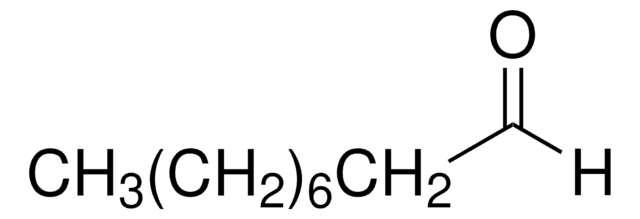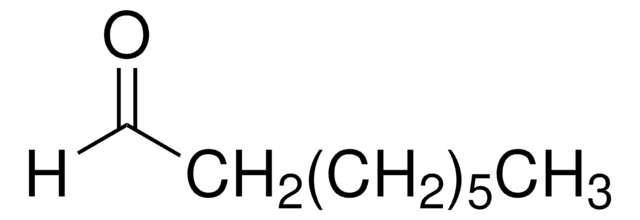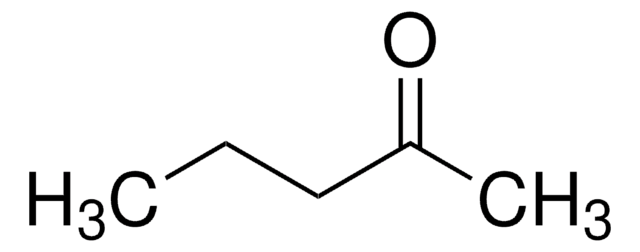W278513
2-Nonanone
natural, ≥97%, FCC, FG
Synonym(s):
Heptyl methyl ketone
About This Item
Recommended Products
grade
FG
Fragrance grade
Halal
Kosher
natural
Quality Level
Agency
follows IFRA guidelines
meets purity specifications of JECFA
reg. compliance
EU Regulation 1223/2009
EU Regulation 1334/2008 & 178/2002
FCC
FDA 21 CFR 172.515
Assay
≥97%
greener alternative product characteristics
Less Hazardous Chemical Syntheses
Use of Renewable Feedstocks
Learn more about the Principles of Green Chemistry.
sustainability
Greener Alternative Product
refractive index
n20/D 1.421 (lit.)
bp
192 °C/743 mmHg (lit.)
mp
−21 °C (lit.)
density
0.82 g/mL at 25 °C (lit.)
application(s)
flavors and fragrances
Documentation
see Safety & Documentation for available documents
food allergen
no known allergens
fragrance allergen
no known allergens
greener alternative category
Organoleptic
cheese; coconut; green; fruity; waxy; herbaceous
SMILES string
CCCCCCCC(C)=O
InChI
1S/C9H18O/c1-3-4-5-6-7-8-9(2)10/h3-8H2,1-2H3
InChI key
VKCYHJWLYTUGCC-UHFFFAOYSA-N
Looking for similar products? Visit Product Comparison Guide
General description
Application
- Antifungal activity of bio-active cell-free culture extracts and volatile organic compounds (VOCs) synthesised by endophytic fungal isolates of Garden Nasturtium.: This research highlights the antifungal properties of 2-Nonanone, demonstrating its potential in biological control and offering an alternative to chemical pesticides in agricultural practices (Santra et al., 2024).
Hazard Statements
Precautionary Statements
Hazard Classifications
Aquatic Chronic 3
Storage Class Code
10 - Combustible liquids
WGK
WGK 1
Flash Point(F)
147.2 °F - closed cup
Flash Point(C)
64 °C - closed cup
Personal Protective Equipment
Regulatory Listings
Regulatory Listings are mainly provided for chemical products. Only limited information can be provided here for non-chemical products. No entry means none of the components are listed. It is the user’s obligation to ensure the safe and legal use of the product.
FSL
Group 4: Flammable liquids
Type 2 petroleums
Hazardous rank III
Water insoluble liquid
JAN Code
W278513-1KG-K:4548173972961
W278513-100G-K:4548173972954
W278513-25G:
W278513-VAR-K:
W278513-25G-K:
W278513-4KG-K:
W278513-BULK-K:
W278513-1KG:
W278513-SAMPLE:
W278513-100G:
W278513-SAMPLE-K:
W278513-4KG:
Choose from one of the most recent versions:
Already Own This Product?
Find documentation for the products that you have recently purchased in the Document Library.
Our team of scientists has experience in all areas of research including Life Science, Material Science, Chemical Synthesis, Chromatography, Analytical and many others.
Contact Technical Service






